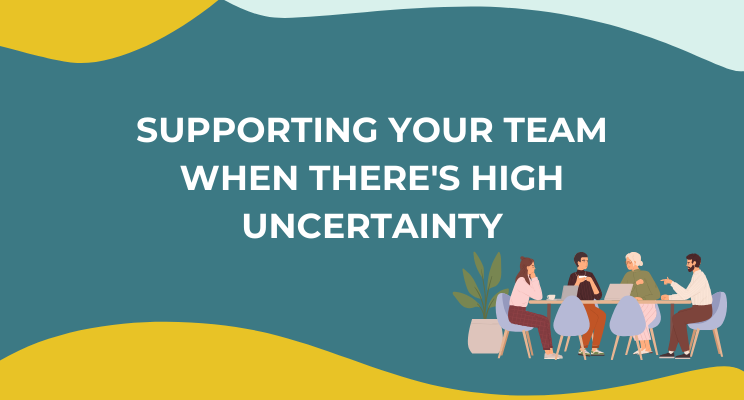Over the past few weeks, the word ‘Zoom’ has slipped effortlessly into our vocabulary. We are now ‘on a Zoom’; been ‘invited to Zoom’; multiple Zooms mean we are ‘Zoomeranging’; we find ourselves ‘Zooming in’ and many people are already ‘Zoomed out’! Everything has changed at one level, but for many, the relentless conveyor-belt of meetings has simply re-focused from the office to the virtual conference room.
So, how do we get the most out of our Zoomeranging?
As team coaches, we invariably address the difficult topic of meeting structure and frequency. Now that we are in a season when we can only meet virtually, the importance of being able to run, or participate in, great meetings is arguably even more critical.
Framing & focusing our time
To establish clarity and focus for meetings we use a simple framework which helps you to map the different types of meeting that are needed (relevant for virtual and face-to-face meetings). But note, it is only a frame and we often find that other meeting frequencies are required for specific topics. So adapt it as you need to:

The rules of thumb for these types of meeting are:
Daily: During this season of disruption, working virtually and in social isolation, it’s critical to maintain human contact. A short (max 15 mins) daily check-in that focuses on how we are, our plans for the day and how people can be supported. A short daily check-out closes off the day, creating a routine that focuses on emotional wellbeing (not tasks) and helps people transition from a primarily working space into a primarily home space. Both are very practical ways of demonstrating care for one another. Some people are also using platforms like Zoom to hang out with one another. A hangout tries to simulate the office environment, where a few people are simply getting on with their work alongside one another on Zoom. The benefit of this is that it allows for more spontaneous chat and ideation. It also fills a big hole for extroverts!
Weekly: Focus on the operational rhythms of your work in one type of meeting. This will enable you to review what has been done, track progress, plan ahead and discuss how you can help one another. Set aside different time for more informal team social time/fun. It’s not easy to create the dynamic of a more informal time together virtually but there are already some amazing teams who have unleashed their creativity to lighten up the mood. Check out LinkedIn.
Monthly: There should be focused time for future-orientated content such as strategic projects and reviews of business performance. This might not be too different to your current meeting schedule, but this type of meeting should not be confused with more tactical/operational discussions.
Bi-Monthly/Quarterly: More so than ever, there is a need to set aside quality time to make sense of what’s going on. In uncertain, fast-moving times like these no one person sees the whole picture and no one person has the answer. We absolutely must take time to share perspectives and bring each of our piece of the jigsaw puzzle to create a more complete picture. Structuring these time outs so that discussions are skilfully facilitated is even more critical. Team development and learning is also a critical part of collective sense-making and time should be made for this too.
Attending to what’s different about virtual meetings
Like all meetings, virtual meetings need good planning, facilitation and structure. There are three key things to pay particular attention to in the virtual world:
- Duration / attention span: None of us like long, ineffective meetings. In the virtual world, if meetings need to last longer than 45 minutes schedule a break. Try not to have meetings of longer than 90 minutes in one block. If more time is needed, break the sessions down into more manageable chunks of time.
- Structuring meetings: The core value of virtual meetings is in the planning. Share as much content / information as possible beforehand. Think about how technology will be used and people included. Frame discussions through asking questions – what’s the question we need to answer?
- Dynamics: Building trust, valuing constructive conflict and creating accountability are all so much more difficult in a virtual environment. It’s why thinking about duration, preparation and structure are so important to ensure that the dynamics between people are healthy and that some relational time is built into the meeting.
At Mightywaters we have been helping people work well together for over two decades. If any of what we have written has resonated with you, do get in touch.
Follow-up Exercise:
Reflect on all the different virtual meetings you have been part of over the past few weeks (they don’t have to be on the Zoom platform!). How would you classify them? Were they:
- Inward or outward focused?
- Tactical/operational, strategic or social?
- Team meetings, project meetings or other forms of collaboration?
- Hangouts?
- Check-ins or Check-outs?
- A mish-mash of many of these things?
Think about the balance of time spent. Think about the clarity of focus.
What are your reflections telling you?
What can you do to get more from these times with others?




